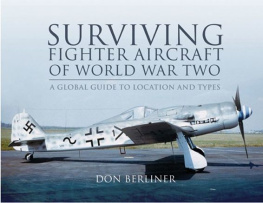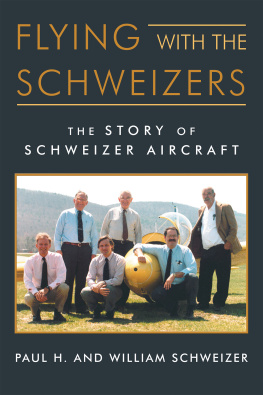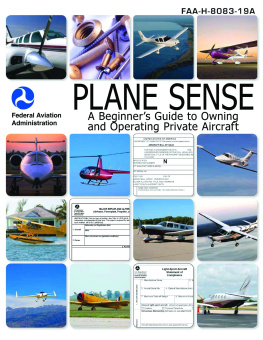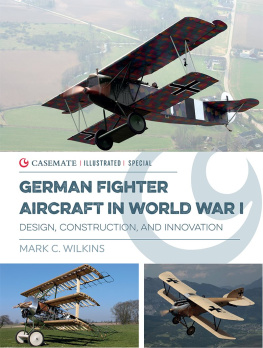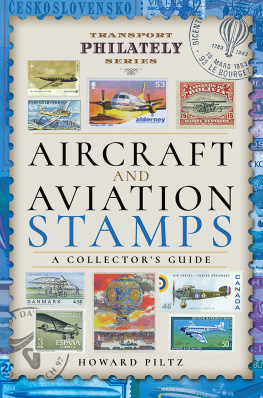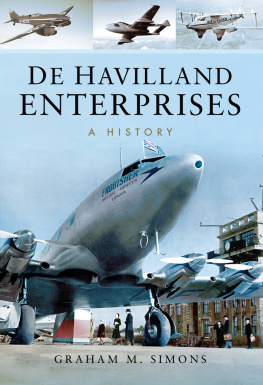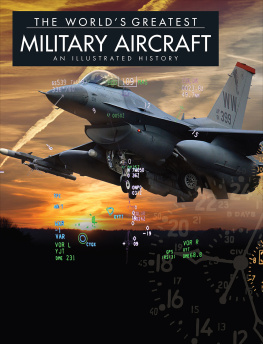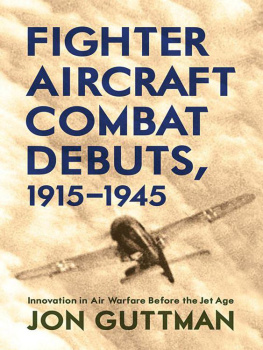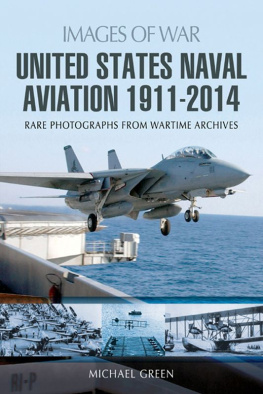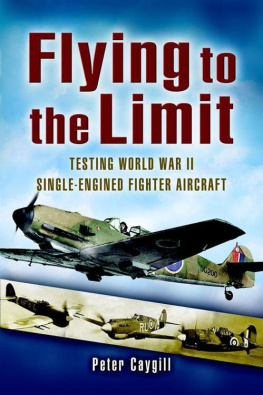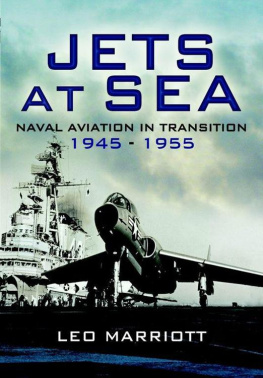

First published in Great Britain in 2011 by
Pen & Sword Aviation
An imprint of
Pen & Sword Books Ltd
47 Church Street
Barnsley
South Yorkshire
S70 2AS
Copyright Don Berliner 2011
ISBN 978 1 84884 265 6
Digital Edition ISBN: 978 1 78340 757 6
The right of Don Berliner to be identified as Author of this work
has been asserted by him in accordance with the Copyright, Designs
and Patents Act 1988.
A CIP catalogue record for this book is
available from the British Library
All rights reserved. No part of this book may be reproduced or transmitted in any form or by any means, electronic or mechanical including photocopying, recording or by any information storage and retrieval system, without permission from the Publisher in writing.
Typeset in 10.5pt Palatino by Mac Style, Beverley, East Yorkshire
Printed and bound in India by Replika Press Pvt. Ltd.
Pen & Sword Books Ltd incorporates the Imprints of Pen & Sword Aviation, Pen & Sword Family History, Pen & Sword Maritime, Pen & Sword Military, Pen & Sword Discovery, Wharncliffe Local History, Wharncliffe True Crime, Wharncliffe Transport, Pen & Sword Select, Pen & Sword Military Classics, Leo Cooper, The Praetorian Press, Remember When, Seaforth Publishing and Frontline Publishing
For a complete list of Pen & Sword titles please contact
PEN & SWORD BOOKS LIMITED
47 Church Street, Barnsley, South Yorkshire, S70 2AS, England
E-mail:
Website: www.pen-and-sword.co.uk
Contents
Introduction
A million and a half aircraft have been built since the Wright Brothers presented the world with their 1903 Flyer that achieved what earlier, so-called airplanes did not: FLIGHT! Most have been airplanes (fixed-wing, powered, heavier-than-air, man-carrying), but many others were seaplanes, gliders, helicopters and lighter-than-air blimps and dirigibles.
Almost half of all those 1,500,000 aircraft were built for World War Two: 750,000 fighters, bombers, transports, trainers, scouts, gliders and helicopters. Most were built in the United States, Great Britain, France, the Soviet Union, Czechoslovakia, Canada, Australia, the Netherlands, Finland, Poland, Germany, Japan, Italy, and Spain.
The total includes older aircraft that remained in military service at the start of World War Two, all those built during and for the war, and all those flown prior to V-J Day on 15 August 1945, even if only in the form of a single prototype that did not get into production before the war ended.
For the purpose of this book, a basic type is exemplified by the P-51 Mustang, while the P-51A and P-51B are considered sub-types. Of more than 500 basic types built as production designs or unsuccessful prototypes, 60 per cent still exist in at least one example and most of them have been restored to near-new (sometimes better than new) condition. Sadly, the remaining 40 per cent seem to have disappeared for good, though hardly any of those can be considered major types. And there is still the remote chance that one or more of them may be discovered in a remote barn or some vast scrap yard.
The total of individual surviving World War Two aircraft is well over four thousand. Easily the most popular type is the North American AT-6/SNJ/Harvard advanced trainer, with almost 1,300 known to exist in some recognizable condition. A significant proportion are not only flyable, but regularly flown as warbirds. The most common sub-types are the AT-6G with 290 survivors, the AT-6D with 270, and the SNJ-4 with 160.
Of the fighters, there are close to 1,000 known, with the P-51 the most popular, at 340 examples, its P-51D sub-type accounting for 275. There are about 220 Spitfires, of which the Mk.IX accounts for 60 and the Mk.XVI, 40.
When completed, this three-volume series will cover about 330 basic types and 500 basic and sub-types combined. Roughly half of them are the only known example to survive for 65 years.
This first volume covers fighters (also known in the US as pursuits). As World War Two was becoming inevitable, most air forces were still equipped with squadrons of open-cockpit pursuit biplanes having fixed landing gears and piston engines, and at least partially covered with doped fabric. Few had top speeds exceeding 250mph. When the war ended, the main air powers the United States, Great Britain, Germany were building scientifically-designed airplanes powered by turbojet engines that could easily top 500mph and sometimes approach 600mph.
The second volume will concentrate on bombers, with about 80 basic types known to exist. The final volume will show all the other types, with at least 150 transports, trainers, rotary-wing, gliders, seaplanes, scout and reconnaissance, research and record-setting and miscellaneous craft.

In all three volumes the author has been faced with the problem of dealing with multi-purpose airplanes such as fighter-bombers, scout-bombers, liaison/utility planes and training gliders. Rather than list them in both categories, he has chosen to list each by its primary function, with reference to the other(s). Even so, some designs simply refuse to be categorized, creating a need for a miscellaneous category.
Chapter One
US Army
Boeing P-26 Peashooter
The sprightly little P-26 was a short-lived bridge between the seat-of-the-pants past and the technological future. It combined wire bracing for the wings, an open cockpit and fixed landing gear, with all-metal construction and monoplane design. It was the first such modern airplane ordered by either the US Army or US Navy, yet was strongly opposed by those who insisted that a pilot must feel the air in order to fly, and who rejected retractable landing gear as too heavy and too unreliable, and a single wing without external bracing as simply not safe.
Boeing entered the pursuit business in 1923 with the PW-9, a conventional biplane powered by a 435hp Curtiss liquid-cooled V-12 engine, and which won contracts from the Army for 110 airplanes, and from the Navy (as the FB-1) for 14 more. Having established itself as a major manufacturer, Boeing added to its reputation in 1929 with the first contract for what would become the standard pursuit for both the Army (P-12) and Navy (F4B), both using the popular 450hp Pratt & Whitney R-1340 Wasp radial engine.
While it was still building P-12s and F4Bs, Boeing prepared to move into the future with an all-metal monoplane. The firms horizons had been expanded to include development of commercial and multi-engined military airplanes, which may have given it the courage to re-enter the pursuit business with a somewhat radical design.
The prototype P-26 first flew on 20 March 1932, and made everything else then being flown by the US military look decidedly old fashioned. Gone was the top wing, along with its interplane struts. While the landing gear was still fixed, it was carefully streamlined. It looked faster than even the sleekest of biplanes, and in fact had a higher top speed as well as a higher landing speed. Criticism of the latter led to the first set of camber-increasing wing flaps installed on any production Army airplane.
Compared with the then-standard Boeing biplane pursuits, the new P-26 was more than 40mph faster and could fly almost 100 miles further on its internal fuel load. Due to its higher wing-loading, compared with the P-12 it had a reduced rate of climb and maximum altitude. Generals and pilots complained, but the future won out, and 139 were ordered in an era when the militarys conservatism was accentuated by the Great Depression and ensuing lack of funds.

